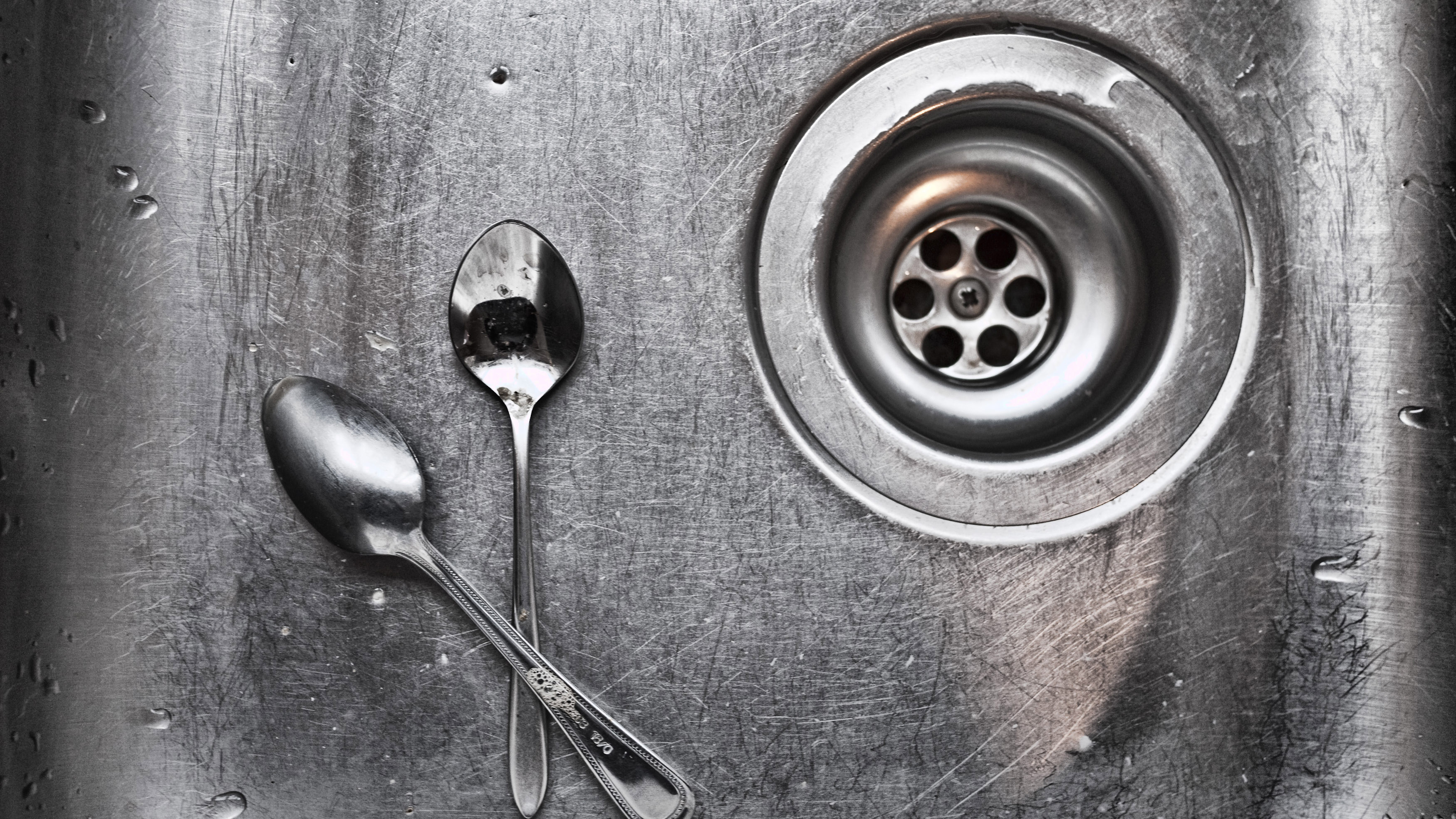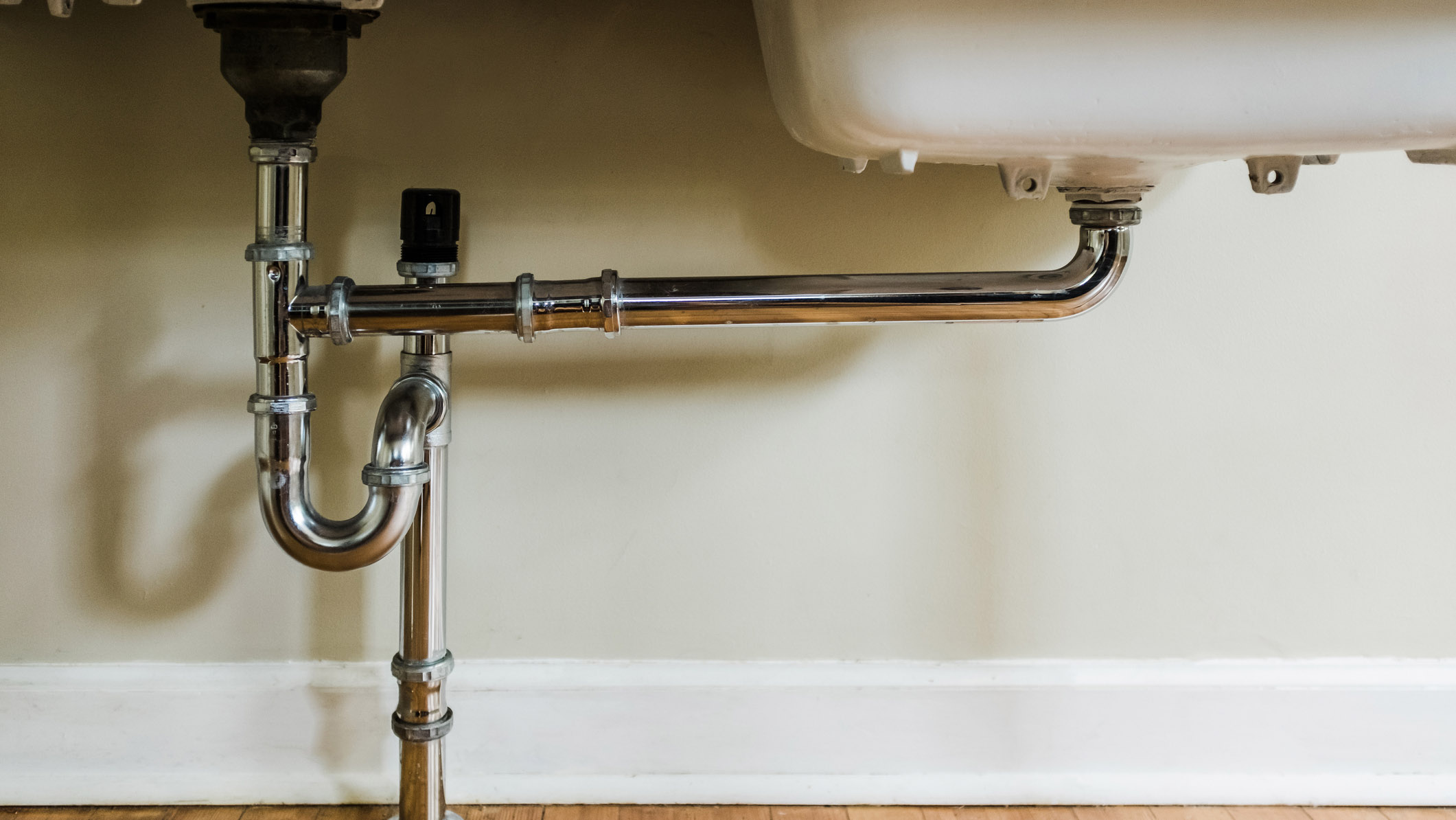How to unblock a sink yourself—five natural methods
Wondering how to unblock a sink on your own? Here are the DIY solutions to try before calling a plumber


Learning how to unblock a sink isn’t pretty, but it will save you time and money in the long run. Maintaining our home is something we all need to do, even if it isn’t particularly exciting. And one place that needs fairly regular maintenance is our sink.
While many of us know how to clean a stainless steel sink, we might not feel so confident about unblocking it. If your sink is draining much more slowly than usual, it may well be blocked below the plughole. It goes without saying—finding out you have a sink blockage, whether in the kitchen or bathroom, is always an unwelcome surprise. It’s frustrating when something that you use all the time isn’t working properly, especially when the only solution seems to be to call a plumber, wait for an appointment and then pay the inevitable—and expensive—bill.
But luckily there are a few easy DIY solutions you can try which should allow you to resolve the blockage problem yourself. To find out where to start, we spoke to Stephany Smith, plumbing professional at My Plumber, part of Fantastic Services. “The clog will usually lie with your habit of dumping oil, fats, and cooked food by-products down your drains,” advises Stephany. It can also build up because of hair—especially long hair. “But this is a fully DIY doable fix even if you don’t have any specialized tools handy.”
How often will a sink need unblocking?
When you’re cleaning your kitchen or working out how to clean a bathroom, and wondering how to unblock a sink, you might be curious about how often you will actually need to do so. But the reality is that it will vary from home to home. Some sinks and plumbing systems will be newer, and therefore less likely to get clogged so often—these might only need unclogging once every six months or so. However, if you have an older plumbing system, unblocking might need to be more regular—sometimes every two months.
But there is no set time frame—you will notice when your sink needs unblocking because the water will be slow to drain, or it may begin to back up into the sink, bringing bits of dirt or hair with it.

Why you should be cautious about using commercial cleaners
However, Stephany warns that learning how to unblock a sink is a DIY job you should approach with caution—especially when it comes to using commercial sink unblocking solutions that promise quick results. “A clogged sink might be a frustrating and emergency problem, but often chemical detergents are the worst enemies of your drainage system,” explains Stephany. “They might damage the finishings on your sink and fittings, or push the clog further down the pipeline, causing a more stubborn obstruction. Plus, you risk corroding your pipes.”
With this advice in mind, we’ve focussed on the most environmentally friendly, natural methods for unblocking a sink. As a bonus, many of these solutions rely on using simple ingredients, including a few kitchen essentials which you probably already have in your home.
Sign up to our free daily email for the latest royal and entertainment news, interesting opinion, expert advice on styling and beauty trends, and no-nonsense guides to the health and wellness questions you want answered.
How to unblock a sink—five natural methods to try
1. Pour hot water down it
It might sound too simple, but sometimes the best solution for blocked or slow-running pipes is to flush the drain with hot water. This action should melt and wash away any residues from oils or fats, probably from grease-laden pots and induction pans, which may be clogging the pipes.
You may use water from the hot tap or kettle for this task, but with the latter, it’s important to let the water cool slightly after reaching the boiling point when working out how to unblock a sink. “Boiling water can deform your PVC water pipes,” cautions Stephany. “Pipe deformations can lead to pinhole leaks and restricted water flow, leading to further frequent opportunities for pipe blockages and malfunctions.” This is one of the quickest solutions for how to unblock a sink, but it's worth noting that it won't work for bigger blockages.
2. Use salt or a baking soda solution
While most plumbing experts advise against using commercial drain unblocking solutions—or at least saving these for the very last resort—there are ways to unblock your sink that use less abrasive and more natural ingredients.
For tougher blockages, your first port of call could be as simple as using table salt. If you have standing water in the sink, first clear this with the help of a bowl. Then, Stephany recommends pouring half a cup of table salt down the drain. Let this sit for 5-10 minutes before flushing with hot (not boiling) water.
If you still have a blockage after trying the salt method, you can also try baking soda—also a helpful ingredient when learning how to clean an oven, or when working out how to clean copper—and vinegar. Simply pour two cups of baking soda down the drain, followed by two cups of white distilled vinegar. As the ingredients combine they should fizz and bubble—a chemical reaction that dissolves sticky residue and gunk. Stick the plug in the drain for a few minutes, then remove it and flush with hot (again, not boiling) water.
3. Try a plunger
For trickier sink blockages, you may need to attack the blockage with a plunger. However, be aware that this technique should never be used after using chemical unblocking products, as doing so could spray toxic chemicals around, causing a risk to health and safety. While a flat-bottom sink plunger is best, a clean toilet plunger will do in a pinch. Simply create a tight seal around the clogged drain and plunge carefully until the sink begins to clear—this may take a few attempts.


4. Clean out the P-trap if you can access it
When it comes to methods for how to unblock a sink, this one is perhaps not a method for the faint-hearted. The P-trap (aka the U-bend pipe which sits underneath the sink) is particularly prone to clogs as this is the prime place where things like soap scum, rogue hairs, grease and food debris can collect. Unsurprisingly, cleaning it out is a messy job that requires rubber gloves, a bucket and some tools, but it can be a great way to eliminate blockages.
To tackle the job, Stephany advises first turning off the water then loosening the P-trap fitting, and taking it outside for a thorough clean before reinstalling. This normally only works with kitchen sinks, where you can usually access the P-trap in the cupboard underneath your sink. It might not be as easy in your bathroom, where you might not be able to access the bottom of the sink so simply.
5. Try a drain snake
Perhaps one of the most popular methods for how to unblock a sink. For a clog that lies deeper than the P-trap, you may need to purchase a simple tool called a drain snake (also known as a cable auger). To use this tool, gently push it through the drain or pipe until you feel the obstruction, then push it a little further into the blockage. This should allow the clogged materials to wrap around the snake (which normally has ridges to be able to catch the dirt), after which the whole lot can be pulled out of the drain with a bit of gentle pressure. Once the drain is clear, flush it with hot water to sanitize. But be warned—this method is a little gross.
Helen Booth is a freelance writer and maker who loves interiors, crafts, and keeping tabs on homes trends. When she's not sourcing inspirational homes for magazine features, you'll find her curating irresistible interiors shopping edits, posting on Instagram—or selling her handmade homewares on Etsy. She also co-founded the popular weekly newsletter Lunch Hour Links, a curated selection of the best books, articles, podcasts and TV shows to browse while you eat your lunch.
